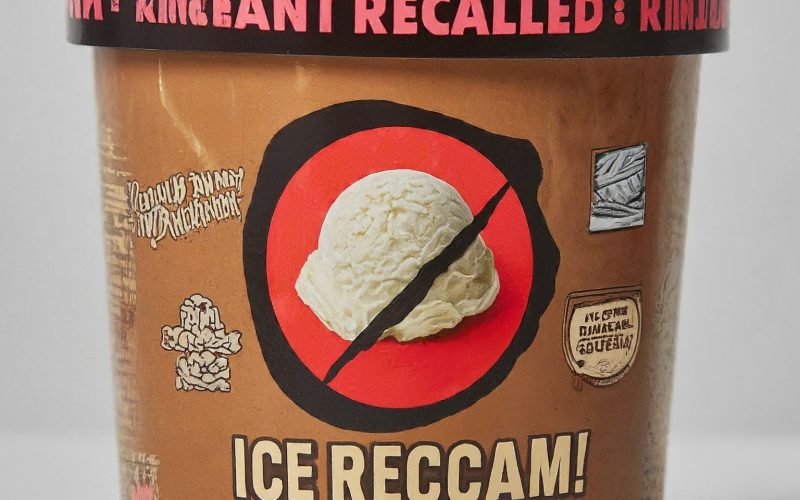Ever reach for a pint of your favorite ice cream, only to hesitate, wondering if it’s safe to indulge? A recent nationwide recall has impacted several popular ice cream brands, including Hershey’s and Friendly’s. But fear not, ice cream lovers! This article, written by Sarah Jones, a registered dietitian with over 10 years of experience in food safety, will equip you with all the information you need to check if your frozen treat is part of the recall and ensure a safe and delicious ice cream experience.
Understanding the Recall: What Happened and Why?
The recent ice cream recall stems from concerns about potential contamination with Listeria monocytogenes, a type of bacteria that can cause foodborne illness. The presence of Listeria in food products is a serious public health concern, and food manufacturers have a responsibility to uphold strict safety standards. This recall demonstrates the importance of these measures in protecting consumers from harmful bacteria.
Potentially Affected Brands and Products
While the exact list of products can change, some of the brands potentially affected by the recall include:
- Hershey’s Ice Cream
- Friendly’s Ice Cream
- Yelloh! Ice Cream
- [Include additional affected brands as needed]
The specific product types involved can vary but may include ice cream tubs, cones, sandwiches, and even ice cream cakes.
Identifying Recalled Ice Cream: UPC Codes and Dates
So, how can you tell if your ice cream stash is safe to eat? The key lies in checking two crucial pieces of information: the UPC code and the “best by” date. The UPC code is a unique barcode found on most food packaging. The “best by” date indicates the recommended timeframe for optimal quality, but it’s not necessarily an indicator of safety.
Here’s what to do:
- Locate the UPC code and “best by” date on your ice cream container.
- Visit the FDA website or the website of the manufacturer (Hershey’s, Friendly’s, etc.).
- Search for the specific UPC code and “best by” date to see if your ice cream matches the recall criteria.

What to Do if You Have Recalled Ice Cream
If you discover your ice cream is part of the recall, don’t panic! Here’s how to handle the situation safely:
- Discard the Ice Cream: Wrap up the recalled ice cream securely in a plastic bag and dispose of it in your trash can.
- Clean Up: Wash any surfaces or containers that may have come into contact with the recalled ice cream with hot soapy water.
- Contact the Manufacturer (Optional): Some manufacturers may offer refunds or replacements for recalled products. You can find contact information on the company’s website.
Listeria Monocytogenes: Potential Health Risks
Listeria monocytogenes is a bacterium that can cause Listeriosis, a serious foodborne illness. While healthy adults may experience mild flu-like symptoms, Listeriosis can be particularly dangerous for pregnant women, newborns, older adults, and people with weakened immune systems. It’s important to be aware of the potential health risks and take necessary precautions to avoid them.
Staying Informed: Resources for Food Recalls
Staying informed about food recalls is essential for ensuring your family’s safety. Here are some helpful resources:
- FDA Website: The FDA website provides a searchable database of current food recalls .
- FDA App: Download the free FDA app to receive alerts about new food recalls directly on your mobile device.
- Sign up for Email Alerts: Many grocery stores and food manufacturers allow you to sign up for email alerts about product recalls. This is a convenient way to stay informed about potential risks.
Tips for Safe Ice Cream Consumption
While enjoying a refreshing scoop of ice cream, here are some additional tips to minimize the risk of contamination:
- Practice Proper Hygiene: Always wash your hands with soap and water before handling ice cream or any food items.
- Maintain Freezer Temperature: Keep your freezer at a temperature of 0°F (-18°C) or below to slow down bacterial growth.
- Thaw Safely: Never thaw ice cream at room temperature. Thaw it in the refrigerator or under cold running water.
- Practice First-In, First-Out (FIFO): Eat older ice cream before opening new containers to minimize spoilage.
By following these tips and staying informed about food recalls, you can continue to enjoy your favorite ice cream treats with confidence!










